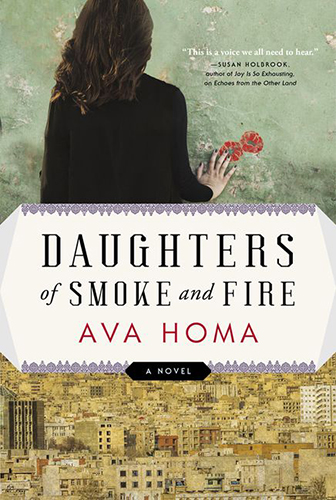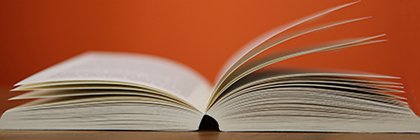On Nov. 23, Kurdish-Canadian writer Ava Homa joined the Canadian Writers in Person series to talk about her debut novel Daughters of Smoke and Fire. York University teaching assistant Dana Patrascu-Kingsley sent the following report to YFile.

“What I was trying to explore in this book is the possibility of transformation and some sort of transcendence in life. We know in theory that it is possible to go through hell and come out on the other side a stronger, more compassionate person,” said Ava Homa during her presentation to Canadian Writers in Person.
Homa’s book was inspired by a Kurdish teacher and activist, Farzad Kamangar, whose writing she encountered when, after getting a degree in creative writing in Canada, she was wondering if her writing could matter here, in Canada. She wondered, “what was the point of writing in a foreign language that wasn’t the language I grew up in? I never saw myself as someone who could get published by Harper Collins Canada and be read by students at York University.”
When she started reading Kamangar’s letters that were written in one of the most notorious places on earth, Evin Prison, in Iran, she liked that his writing wasn’t just an expression of his pain. “He was capable of turning pain into poetry,” said Homa. “He was capable of holding on to his sense of hope and humanity, despite being tortured. I wanted to write history, and I wanted to write what he fought for.”
Chi, one of the characters in Daughters of Smoke and Fire Homa said was inspired by Kamangar’s letters. His sister Leila brings in a Kurdish woman’s view on life in Iran.
“Even though English wasn’t my first or my second language, even though I didn’t grow up with English, I had a very unique position in the world: I spent more than 20 years of my life as a Kurdish woman in Iran, so I knew a lot about what that’s like,” said Homa.
Daughters of Smoke and Fire starts with Leila at that moment in her life when she thinks her life isn’t worth living, and then she slowly moves toward the moment when she can not only help herself, but she can also reach a helping hand to others.
“Look at suffering, see it not just a personal thing, but as the human condition,” said Homa. “When we look at race, nationality, class, all these things that divide us, there is one things that connects all of us: pain. So, if we see it as our connector, then we can grow that ability to witness each other’s suffering. Because it’s so healing. If we think of it as our pain, and what we can do as humans to create less suffering, then that could shift something.”


